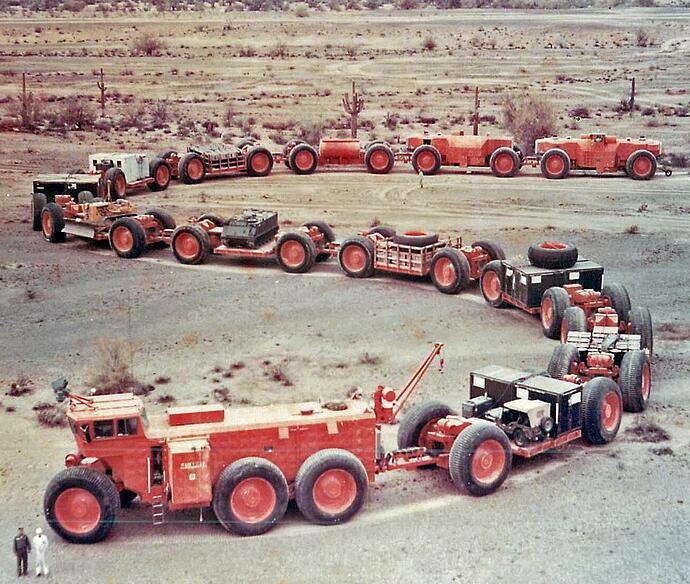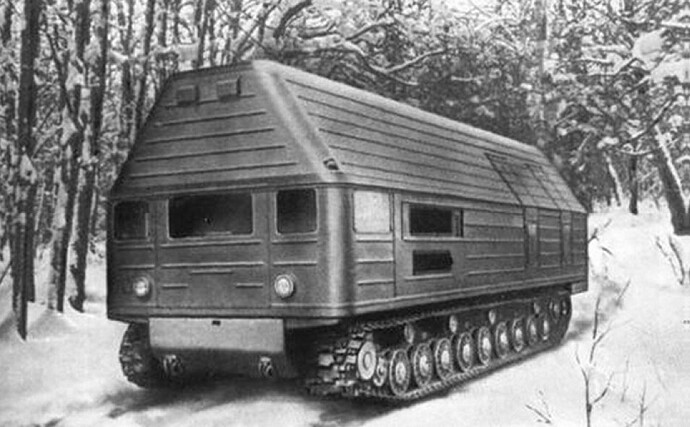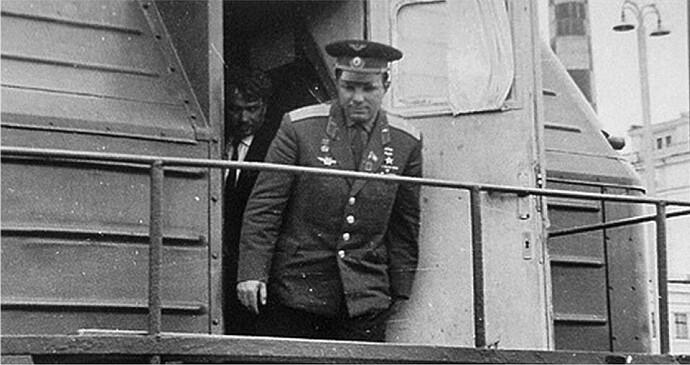In the 1950s, the U.S. Army was interested in off-road logistics delivery vehicles which could supply remote bases and deployed units without depending on road or rail infrastructure. The Army contracted with Texas-based LeTourneau, Inc., a maker of heavy equipment, to design and build a series of vehicles using diesel-electric propulsion with drive motors in each wheel and very large tires to provide all-terrain capability. The resulting vehicles were tested in Greenland and Alaska, and used to deliver cargo to DEW Line radar stations in Alaska.
The ultimate evolution of the concept was the LeTourneau TC-497 Overland Train Mark II, delivered to the Army in 1962.
The control cab unit replaced the diesel engines of earlier models with an 1170 horsepower gas turbine, with three more cars carrying such engines distributed through the train providing electrical power to the wheels of the cargo trailers. Over flat ground, a train with a control car, ten cargo trailers, and two power cars could deliver 150 tons of cargo at 20 miles per hour to a range of 350 to 400 miles, which could be extended by including fuel trailers in the train. The total train was more than 170 metres long, the longest offroad vehicle ever built.
Concepts for future development included adapting the Army Package Power Reactor, a compact nuclear reactor intended to power remote installations, to power the Overland Train, replacing the gas turbine generators in the power cars (but not the control car where the crew of six were housed).
The Overland Train was evaluated in tests at the Yuma Proving Ground in Arizona where the control car remains on display today. The Army lost interest in the overland train concept, judging heavy lift helicopters a better solution for its logistics requirements.
So, the nuclear-powered overland train was never built in the United States. But that didn’t stop the Soviet Union from having a go at it.
This is the TES-3, the “Transportable nuclear power plant”, which was composed of four tracked platforms including the reactor unit (above), turbine-generator, control, and auxiliary units. After arriving at the deployment location, earth would be piled up around the reactor and turbine units as a radiation shield. During the test and evaluation period from 1961 through 1965, the reactor operated for around 13,000 hours without any accidents. The program was shut down after this period, but work continued on other small reactors into the 1980s. A model of the TES-3 was exhibited in many shows around the world. Here is Yuri Gagarin visiting the TES-3 in 1966.



